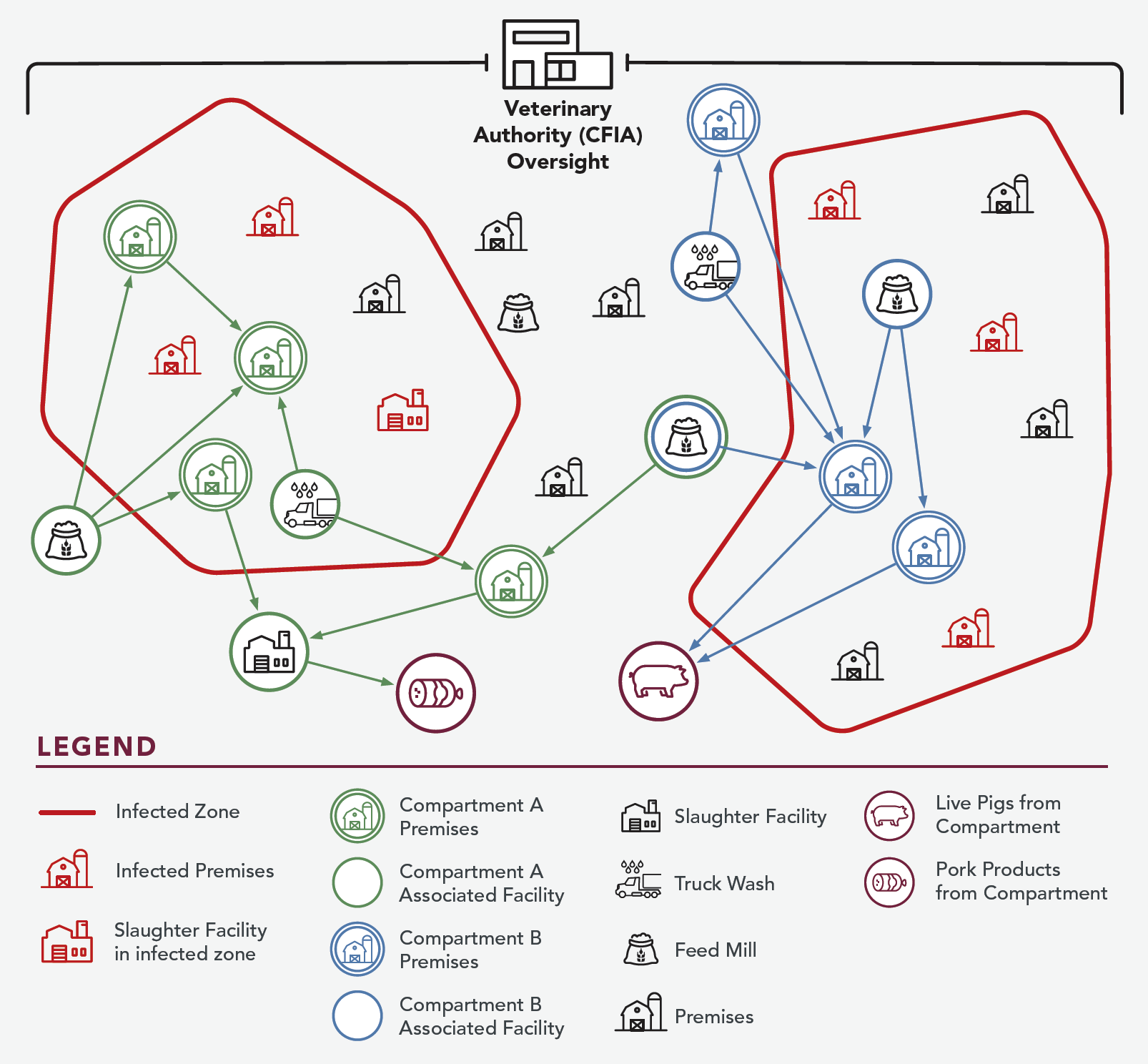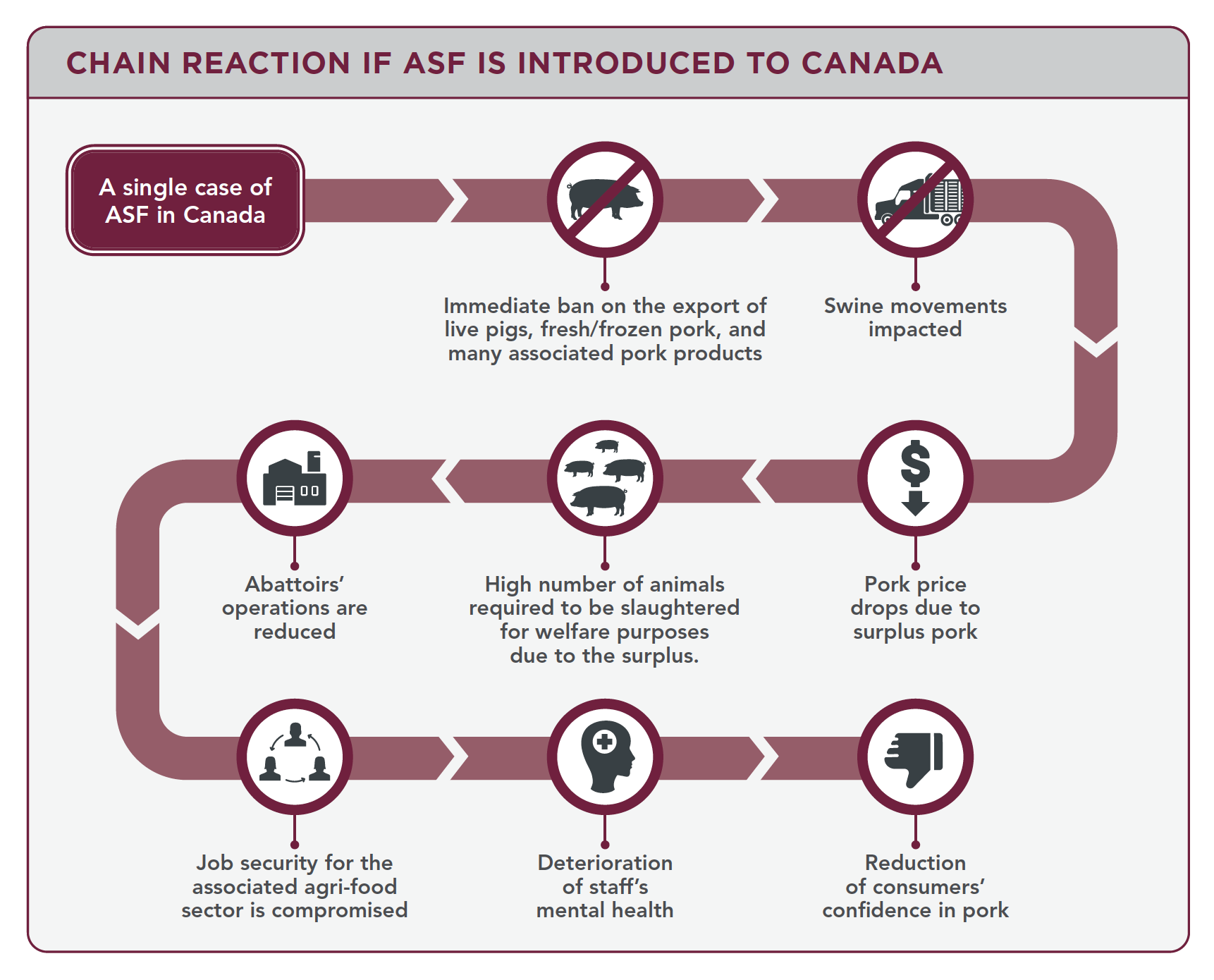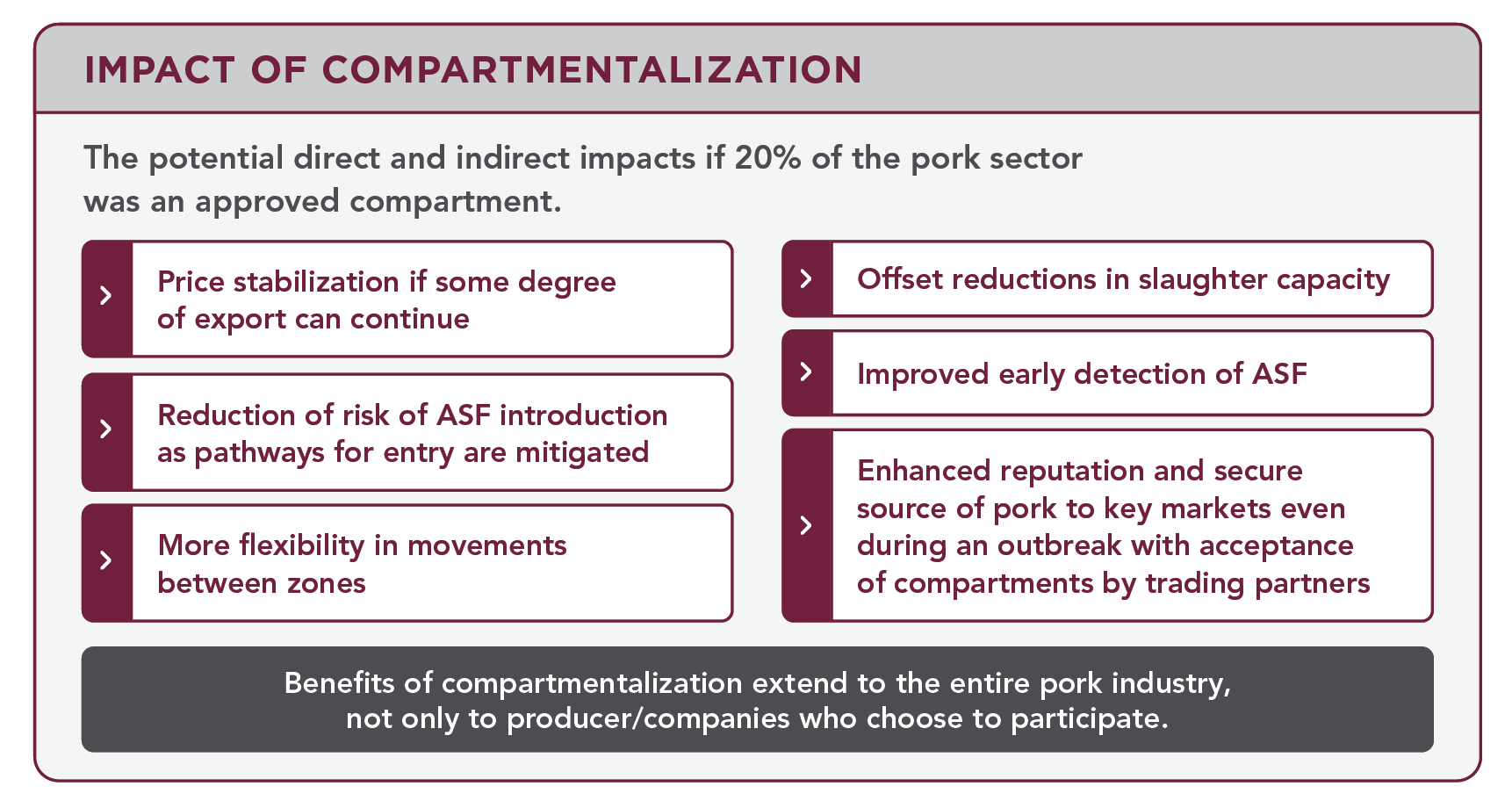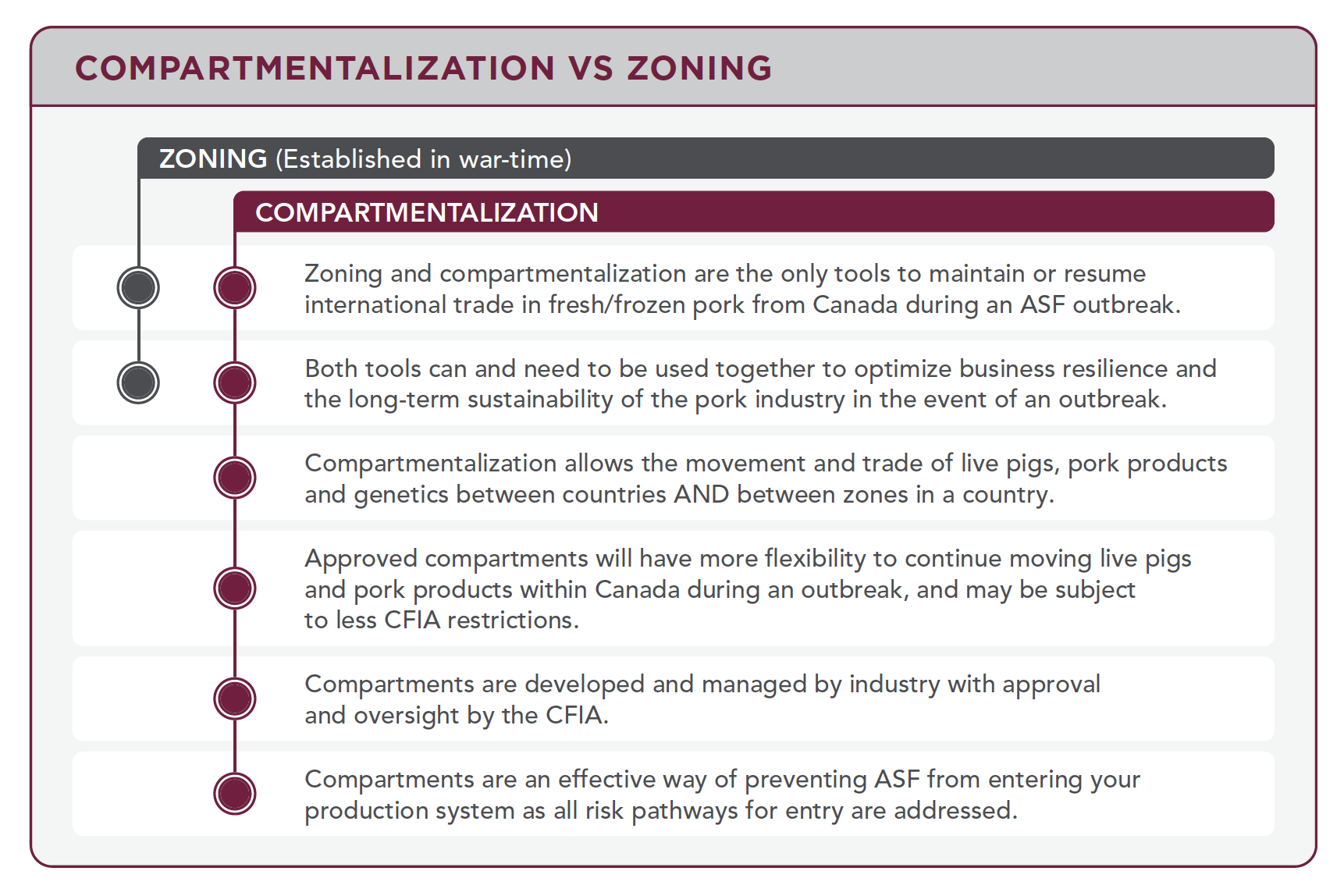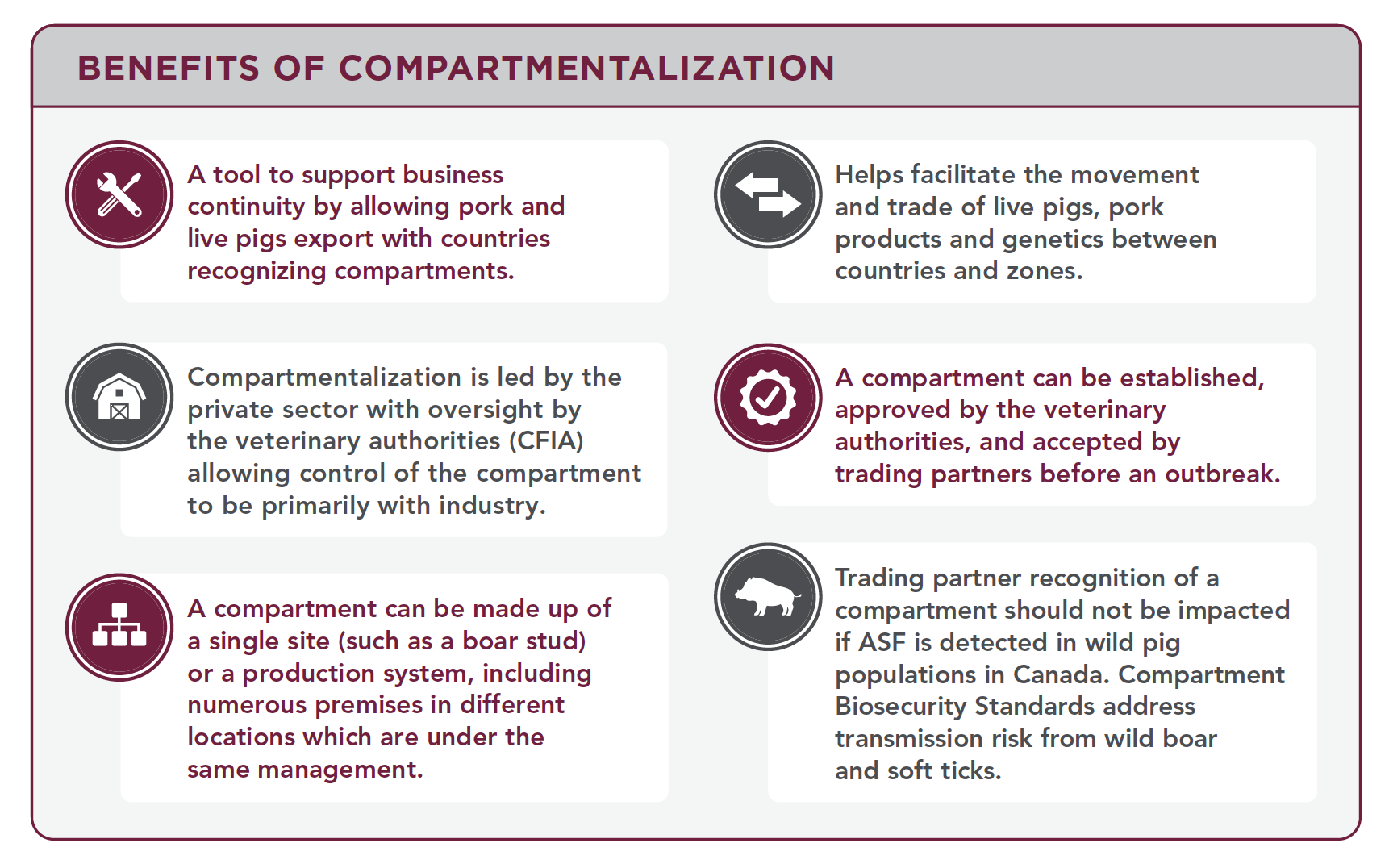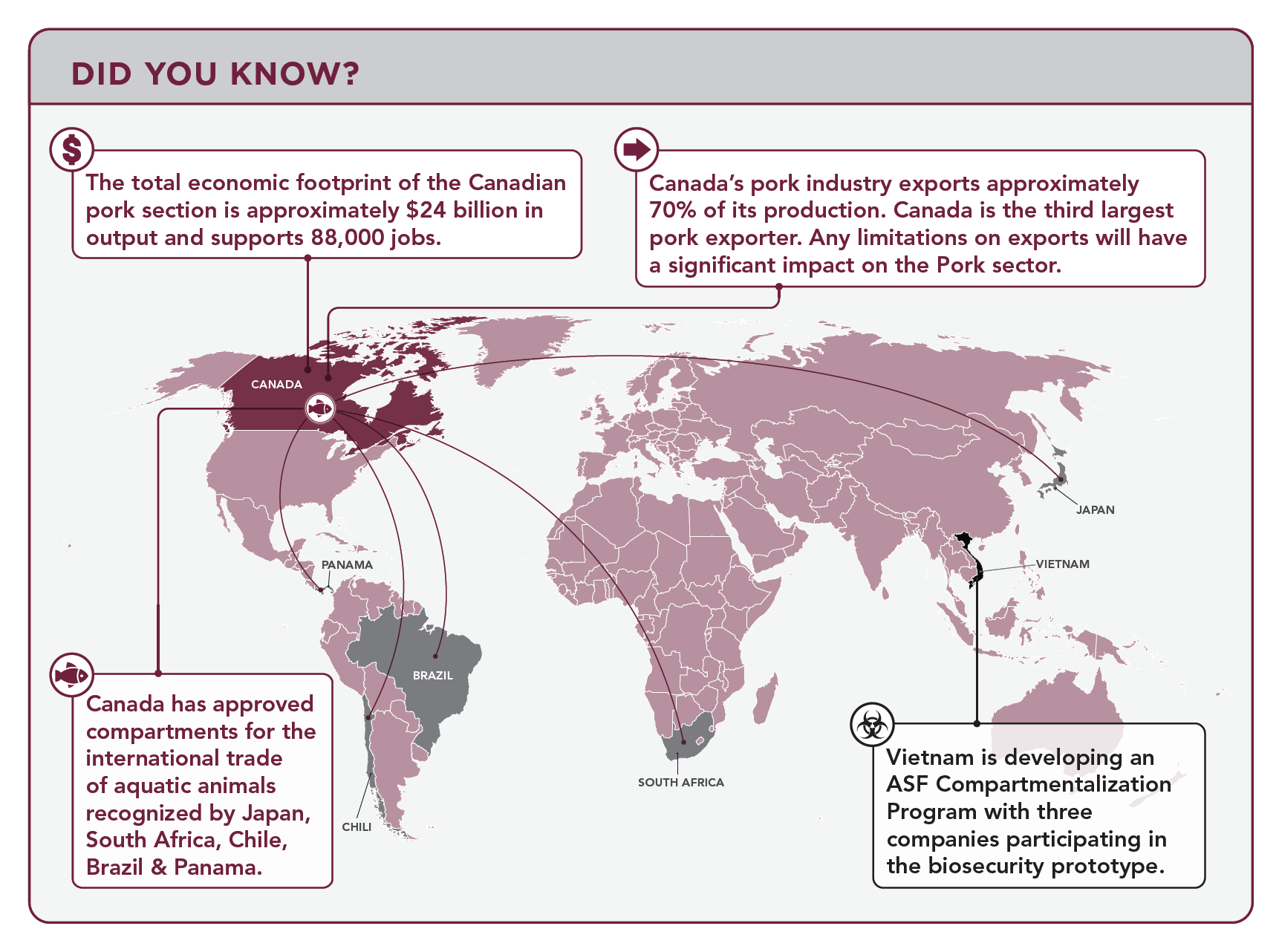Compartmentalization is a targeted risk management approach tailored to specific diseases. It hinges on stringent biosecurity measures, regular surveillance, and traceability within a closed network.
Its primary objective is to instill trust in the health status of animals among global trading partners, thus facilitating ongoing trade and ensuring business continuity, regardless of disease status and associated zones.
Canadian ASF Compartment Program
The program aims to establish compartments free from ASF and demonstrate rigorous biosecurity, surveillance, and traceability measures to prevent the virus’s introduction.
The Canadian Compartment Program comprises three key elements:
- National Standard: The Standard outlines the specific requirements and actions that compartments, and associated facilities must meet.
- Framework: The Framework defines the roles and responsibilities of different entities involved in the program, including the compartment operator, compartment administrator, and the competent veterinary authority (CFIA).
- Compartment Operator Program (COP): The COP details the requirements, strategies and approaches the compartment will employ to fulfill the national standards, ensuring compliance with the Canadian ASF Compartment Program.
You can download the abbreviated summary of the Canadian ASF Compartment Program Requirements from the sidebar.
Compartmentalization – How does it work?
A compartment is defined by the World Organization for Animal Health (WOAH) as an animal sub-population contained in one or more establishments (including farm establishments and related functional units) with a specific animal health status maintained under a common biosecurity management system, that separates it from other animal populations.
A compartment can count multiple type of establishments
- Premises (PID sites)
- Associated Facilities: A compartment associated facility may be associated with one or more compartments owned and operated by different individuals or companies.
- Slaughter Establishments
- Feed Mills
- Truck Wash
The infographic below demonstrates how two different compartments, farms and associated facilities, can move pigs, feed and transport trailers, between compartments, disease-free and infected zones.
What is the impact of finding ASF in Canada?
While ASF has never been identified in Canada, its ongoing global spread presents a substantial threat to both the Canadian pork sector and the national economy.
The introduction of ASF to Canada would have severe consequences for the pork sector, given that approximately 70% of our production is exported. The initial reaction to such an outbreak would involve an immediate halt in the export of both pork products and live pigs.
Why Develop the Canadian ASF Compartment Program?
A Canadian ASF Compartment Program is a critical tool in protecting the Canadian pork industry from ASF while supporting international trade, business continuity, and disease prevention.
There is a need for multiple and diverse business continuity, risk assessment and market access tools.
- A compartment is an effective way of preventing ASF from entering farms and production systems.
- Our current market access tools are inadequate to rapidly minimize the impact of border closures and market disruptions.
- Zoning agreements are important market access tools but do not provide a comprehensive risk management solution, as they are implemented only after the disease is discovered in the country.
- Zoning is primarily a disease control and stop movement mechanism rather than a market access tool.
Benefits of the Canadian ASF Compartment Program
The benefits of compartmentalization expand beyond the desire to control the immediate threat of ASF and may support producers in preventing the introduction of new diseases.
Did you know?
Download the full Compartmentalization infographic from the sidebar.
